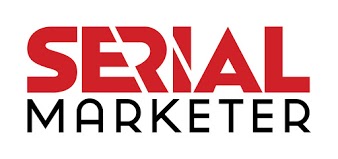This column was originally published today in MediaPost and continues in the extended entry.
What’s the value of advertising with Google? With
Google’s forays into television advertising, can there be a uniform value
proposition?
Google’s advertising offerings can be grouped into three
overarching categories: search, contextual, and offline media. The three are
connected to each other, but the offerings aren’t identical, so if you’re an
advertiser, what exactly is Google bringing to the table? For each of these
three categories, we’ll briefly review the inventory, targeting, and pricing,
and then determine where advertisers will ultimately find the most value.
Search
Inventory: Google controls its own inventory, the volume of which
fluctuates based on the queries entered. It also reps search inventory on
publishing partners like AOL and MySpace.
Targeting: Ads are targeted primarily based on the query entered
by the consumer, but implicit demographic targeting can play a role (if I type
in “pizza” without any location, it serves several ads customized to my city).
Query-based targeting is the highest level of targeting Google offers, as the
consumer’s explicit expression determines what ads appear.
Pricing: Advertisers pay on a cost-per-click (CPC) basis. You can
back into cost-per-impression (CPM) metrics or others, but no matter what,
you’re paying for the clicks.
Contextual
Inventory: The inventory comes from its AdSense partners, and
their traffic determines the number of impressions.
Targeting: Ads are targeted to the content of the page, and if the
advertiser chooses, to the demographics of select sites’ visitors. The targeting
is less effective than search targeting, and it’s not unique to Google, but the
model as a whole is a dramatic improvement compared to print advertising, as
AdSense aims to provide the most relevant ad for every single page view.
Pricing: What’s your pleasure? Google uses its contextual network
to experiment with auction-based pricing through just about any model you can
think of — CPC, CPM, or cost-per-action (CPA). Google won’t do this with
search, and it can’t do this with offline media, so Google chooses this channel
to give advertisers the most choice.
Offline
Inventory: Google doesn’t own any of this inventory, and it’s
trying to represent whatever it can in radio, magazines, newspapers, and now TV.
Outdoor advertising can’t be far behind, and if the print Yellow Pages keep
kicking around, it’ll go there too.
Targeting: This is the major pitfall for advertisers who
appreciate Google’s targeting abilities online. For print media, advertisers can
only target ads based on the publications’ demographics. For TV, the options are
targeting by demographic, daypart, and network.
Pricing: As much as Google’s targeting for offline media feels so
20th century, the auction-based model for offline media is decidedly
something new. This is especially true for TV, where advertisers pay only for
impressions delivered.
The Value
Google is sending mixed signals on where its value lies. For all
channels, inventory is increasing, whether it’s the searches per user, the
publishers in its contextual network, or the media properties in all of its
offline efforts. Though Google’s TV ads will only run on EchoStar and Astound
Cable, that’s still astounding for a company that, based on its revenues, is
still a search engine. It’s also even more impressive given that the
Cabletelevision Advertising Bureau rejected the auction platform being developed
by eBay. Google will now have a live trial where it can prove itself.
The targeting gets progressively weaker as advertisers migrate
from search to contextual to offline. Yet the TV targeting may well improve as
TV becomes more digital, and potentially more interactive. If Google gets enough
inroads into TV, it could target ads based on program transcript, the viewing
history of consumers, and searches on interactive program guides. Still, today
the offline targeting is hardly a selling point.
The pricing, conversely, is a bigger selling point as Google
expands away from search. Its CPC model for search ads wasn’t innovative when
Google first ran ads. The flexibility of CPC, CPM, and CPA on an auction basis
for contextual advertising offers much more value for advertisers. And an
accountable, auction-based platform for offline media places Google among the
pioneers there.
To see where Google’s going with this, we have to return to its
mission statement: “Google’s mission is to organize the world’s information and
make it universally accessible and useful.” Along with organizing the world’s
information, it wants to represent it, and then monetize it any way it can. For
advertisers, that means Google will keep building out its one-stop-shop
approach. If you have a single point of contact for connecting with consumers
through all the world’s information, then you don’t need to go anywhere else.
How well Google will succeed with that is another story, but its
value proposition extends far beyond its targeting and its pricing. In the end,
inventory is everything.







No Comments
Leave a comment Cancel